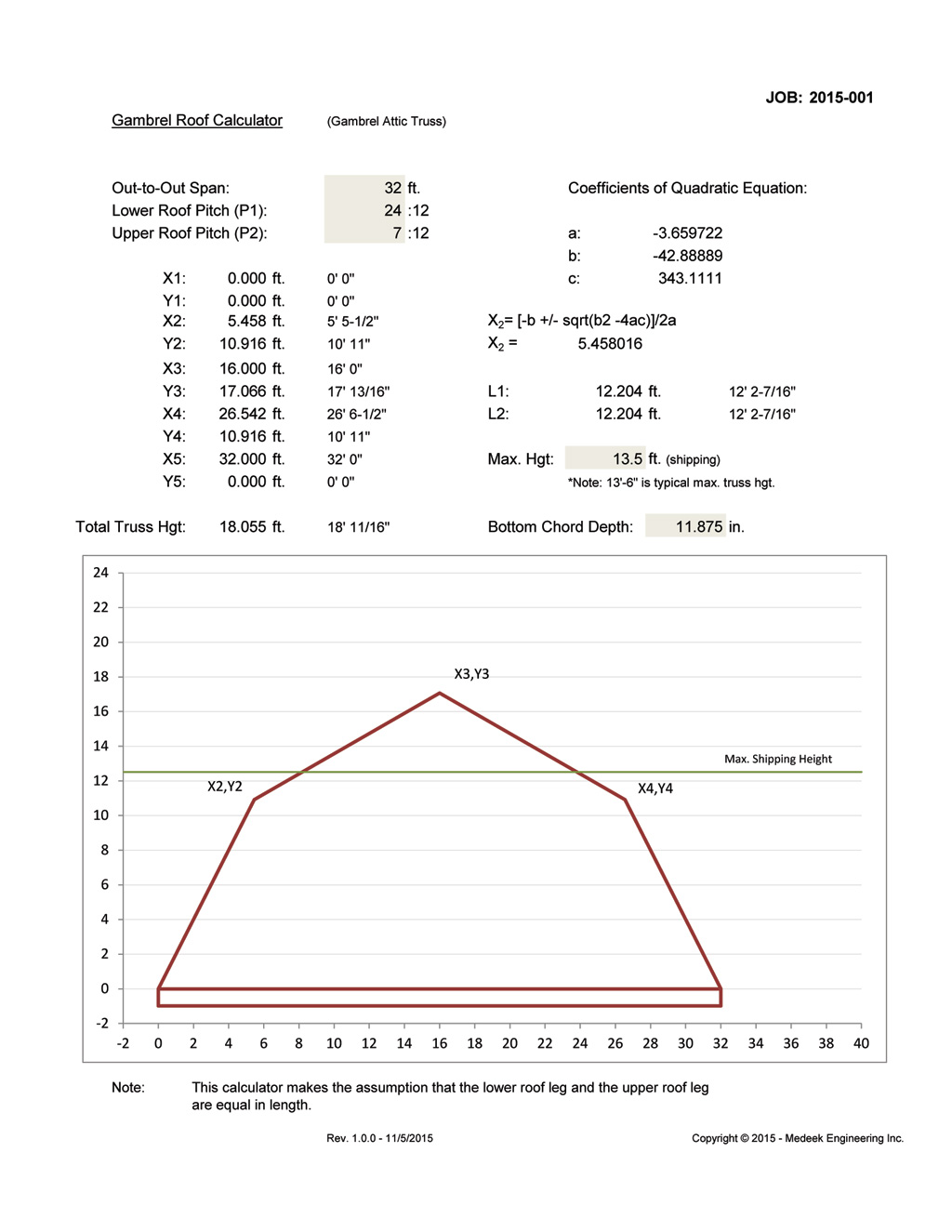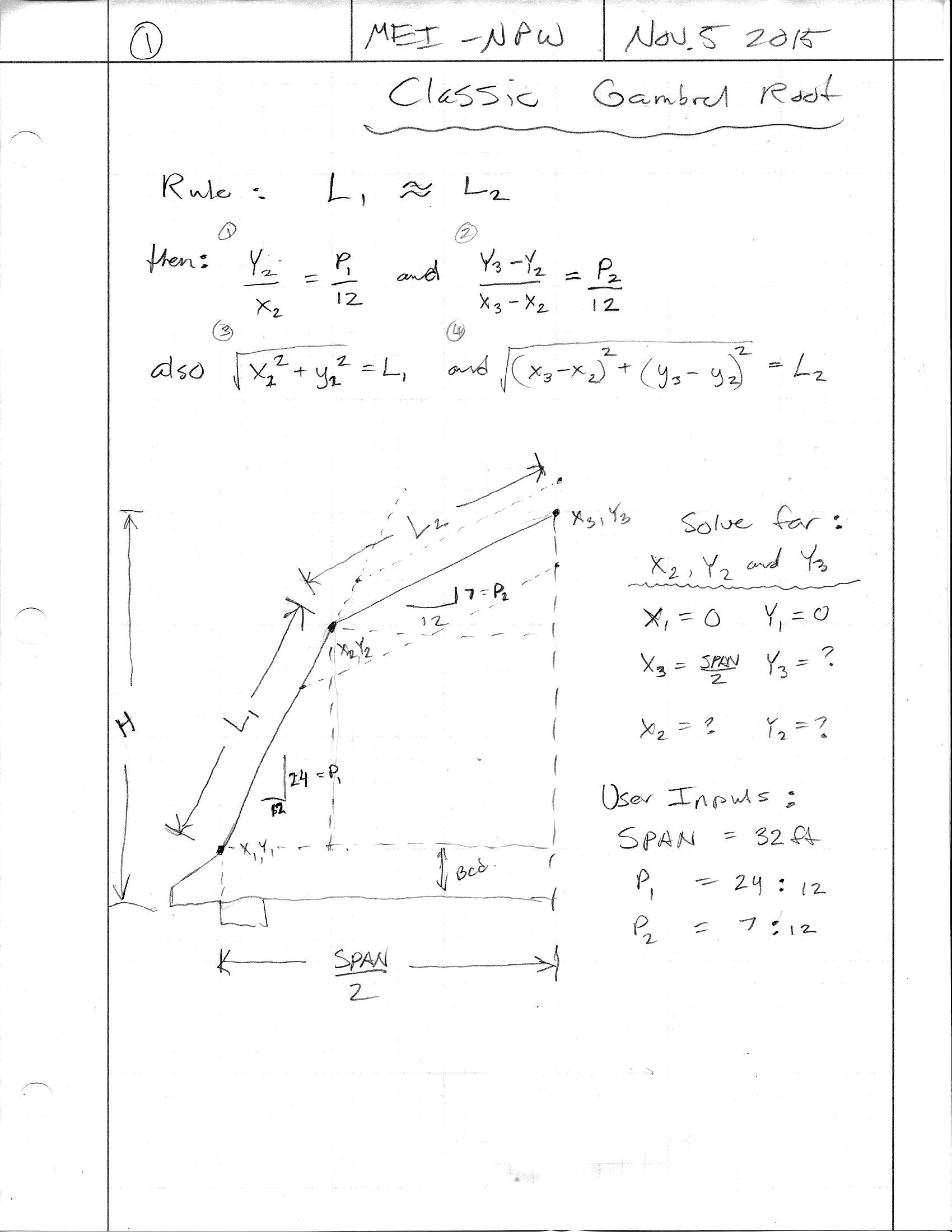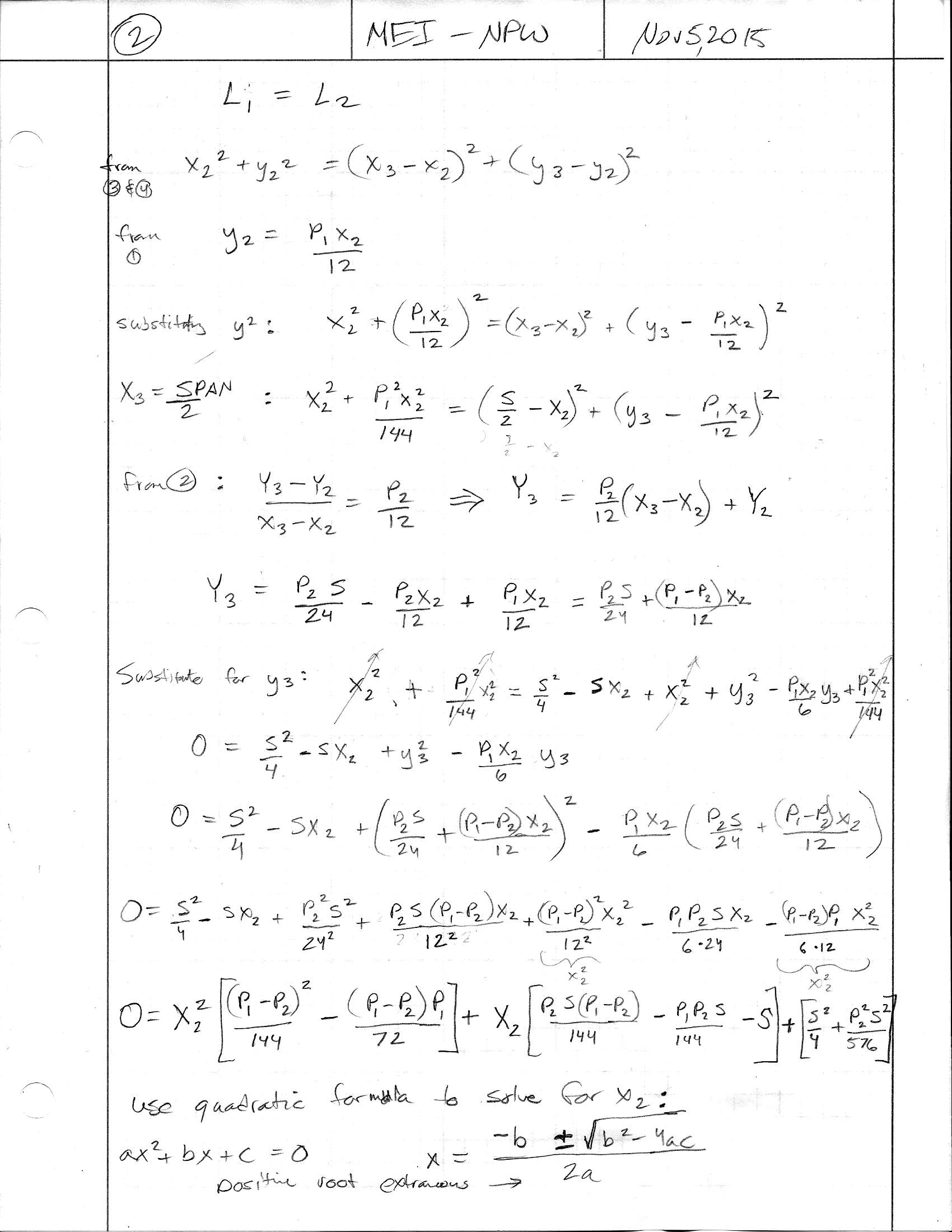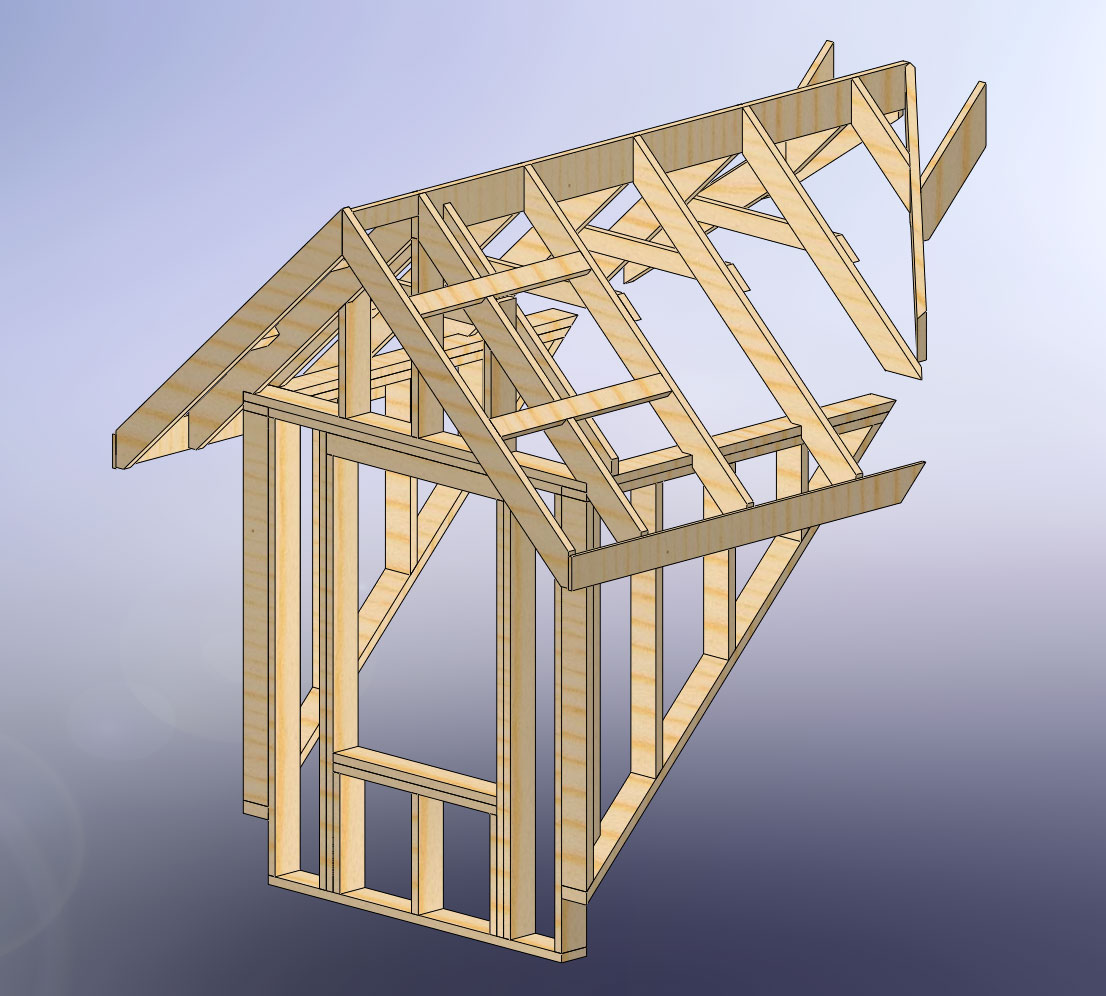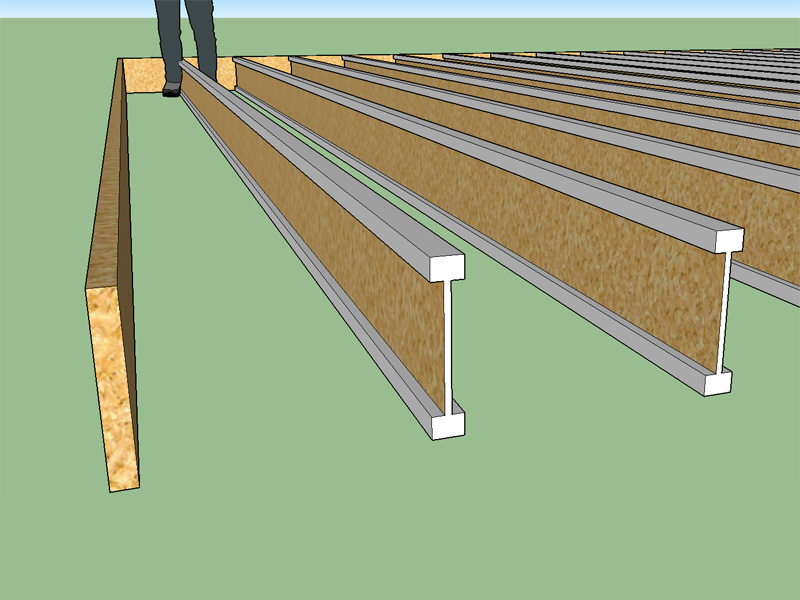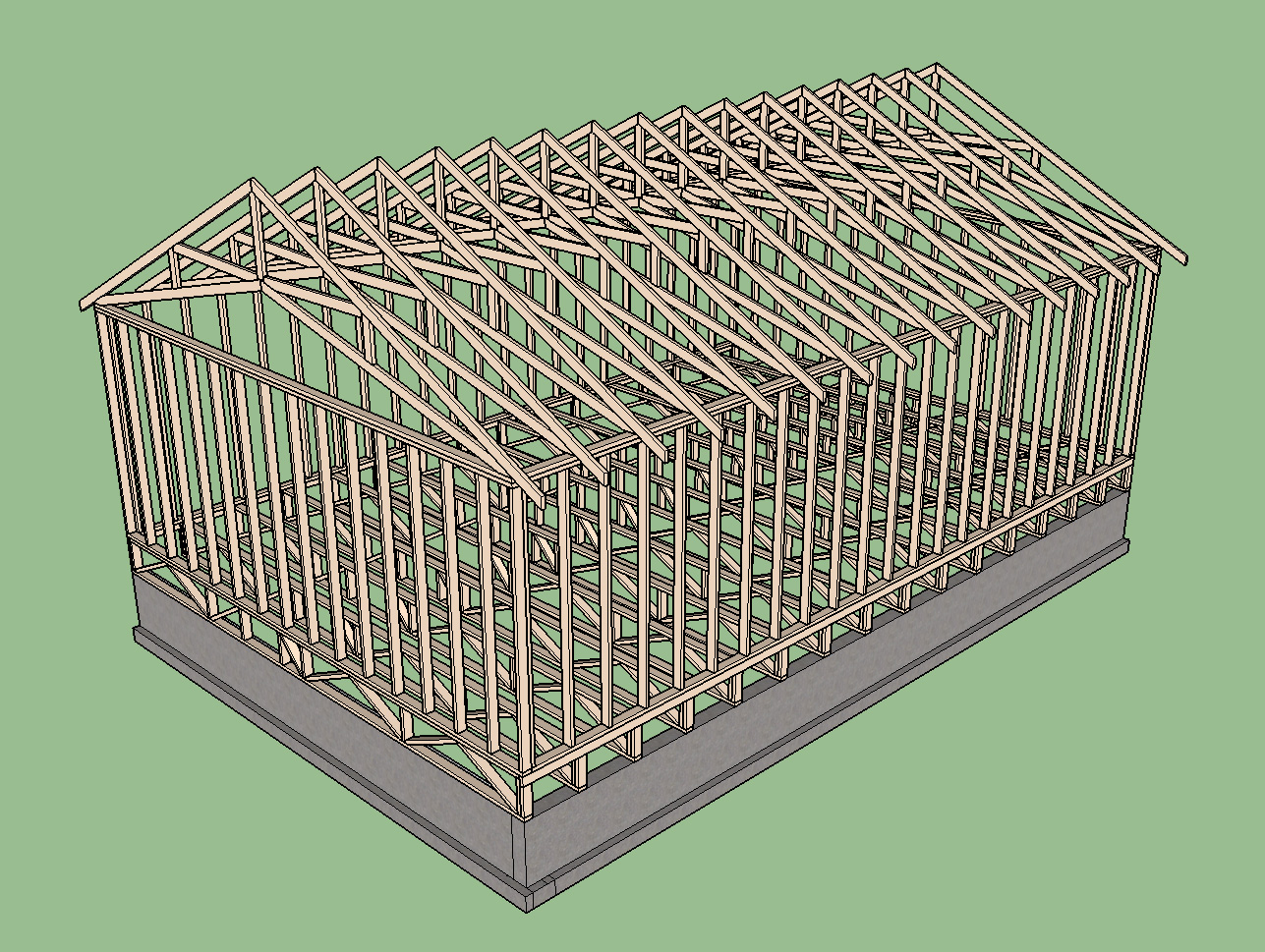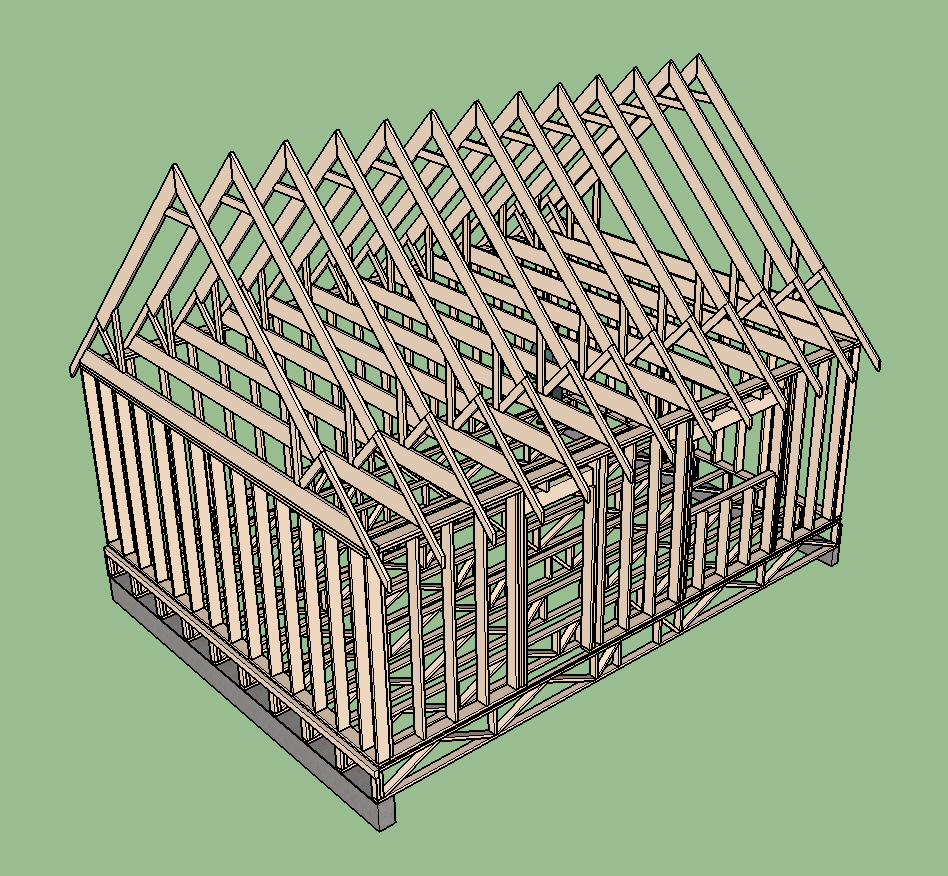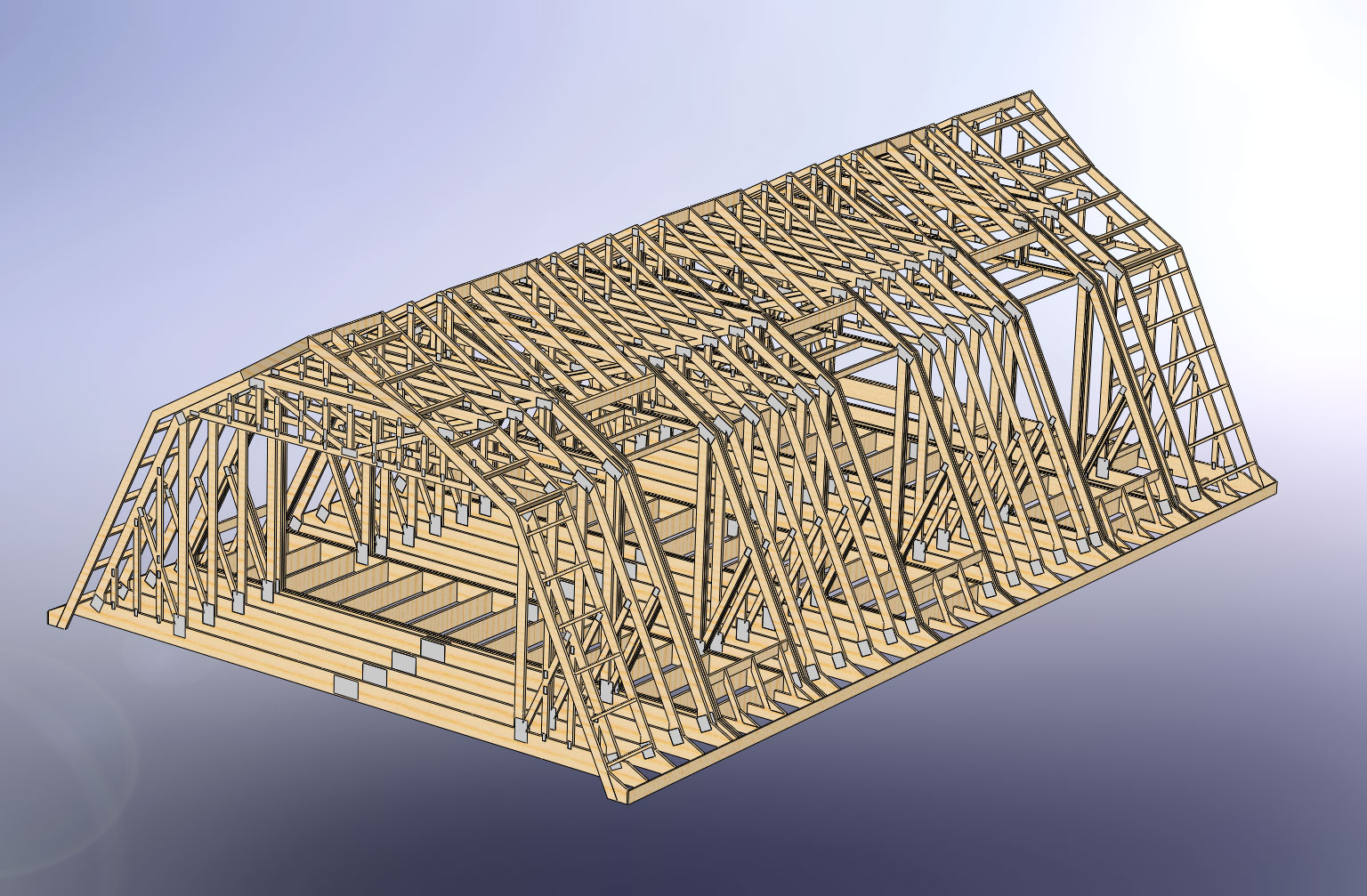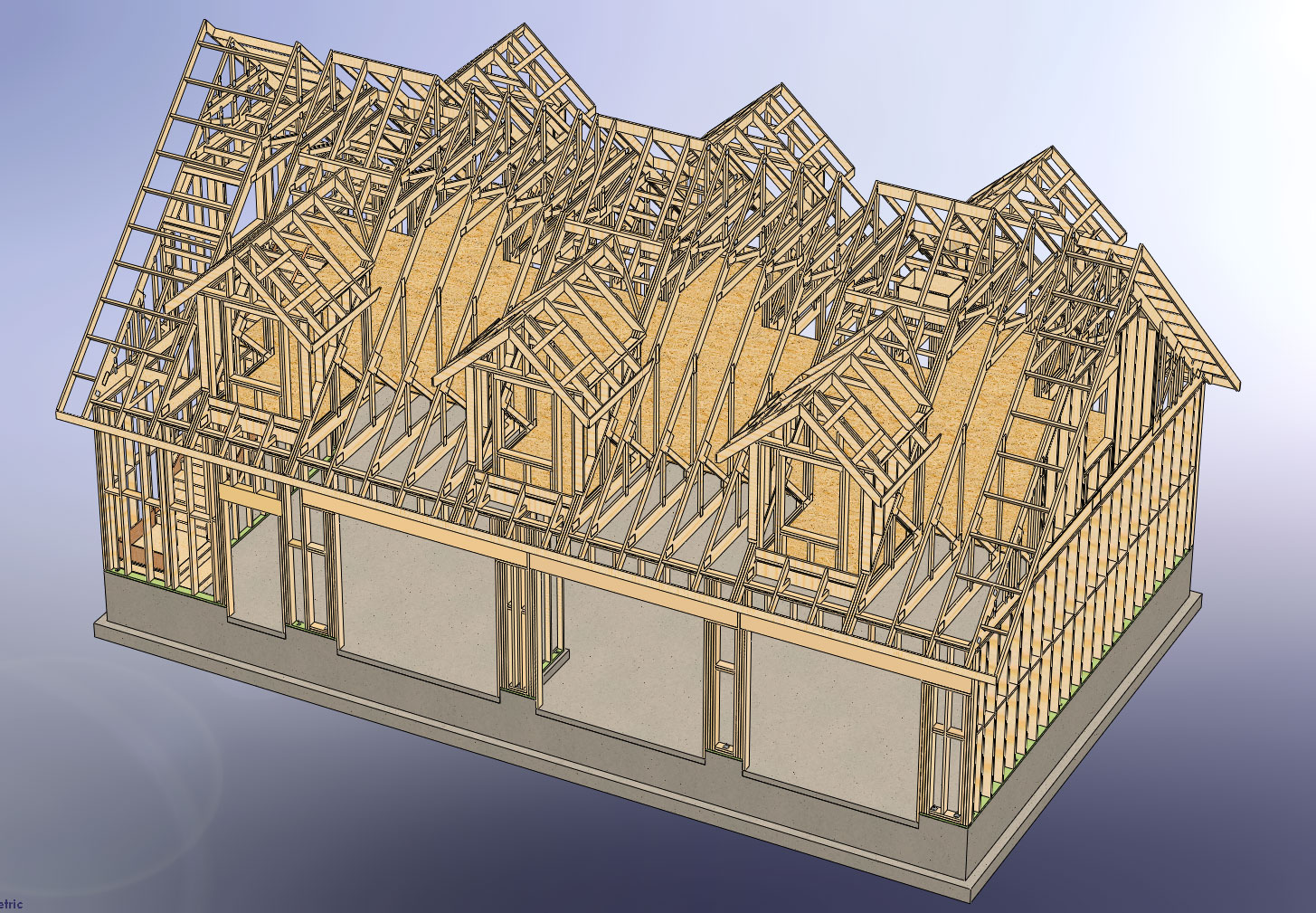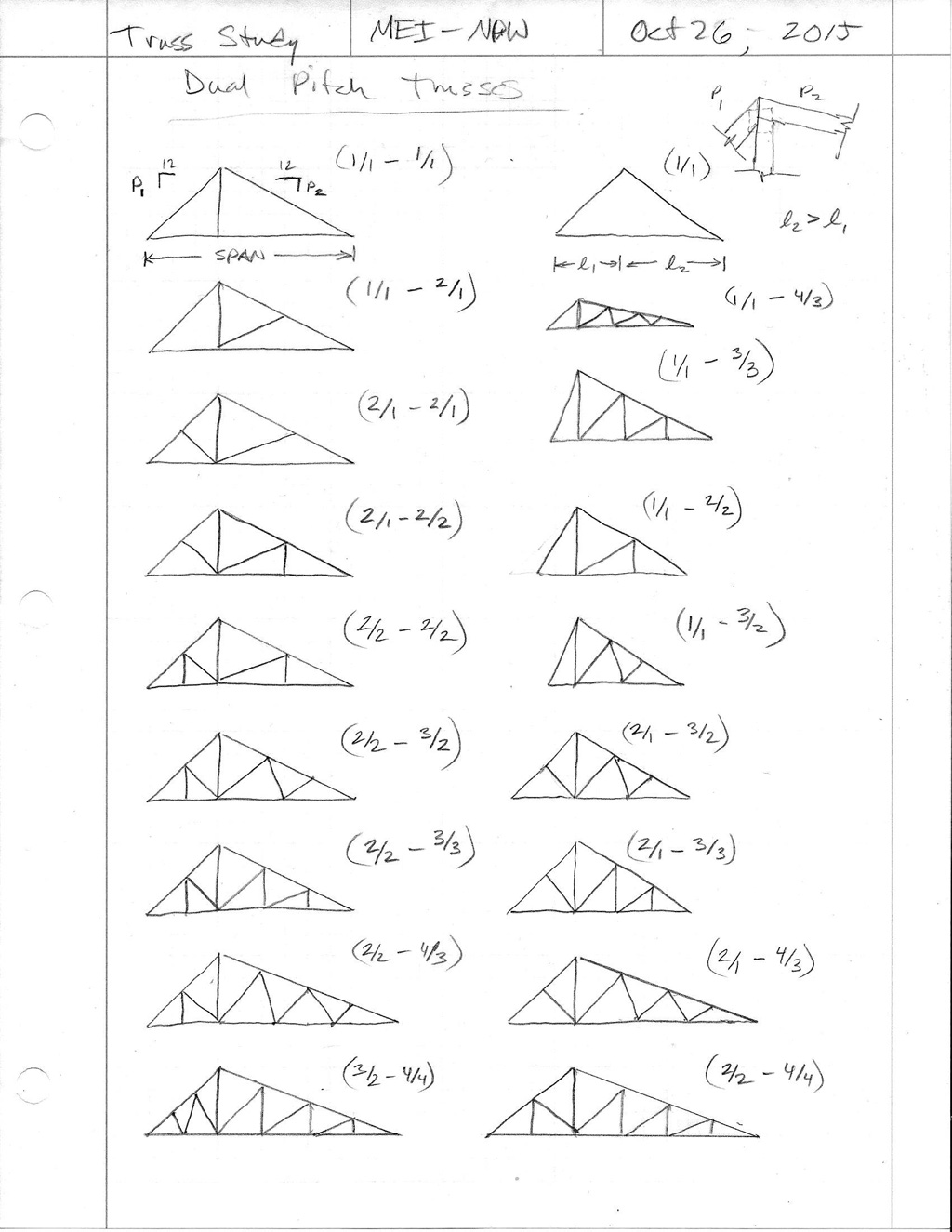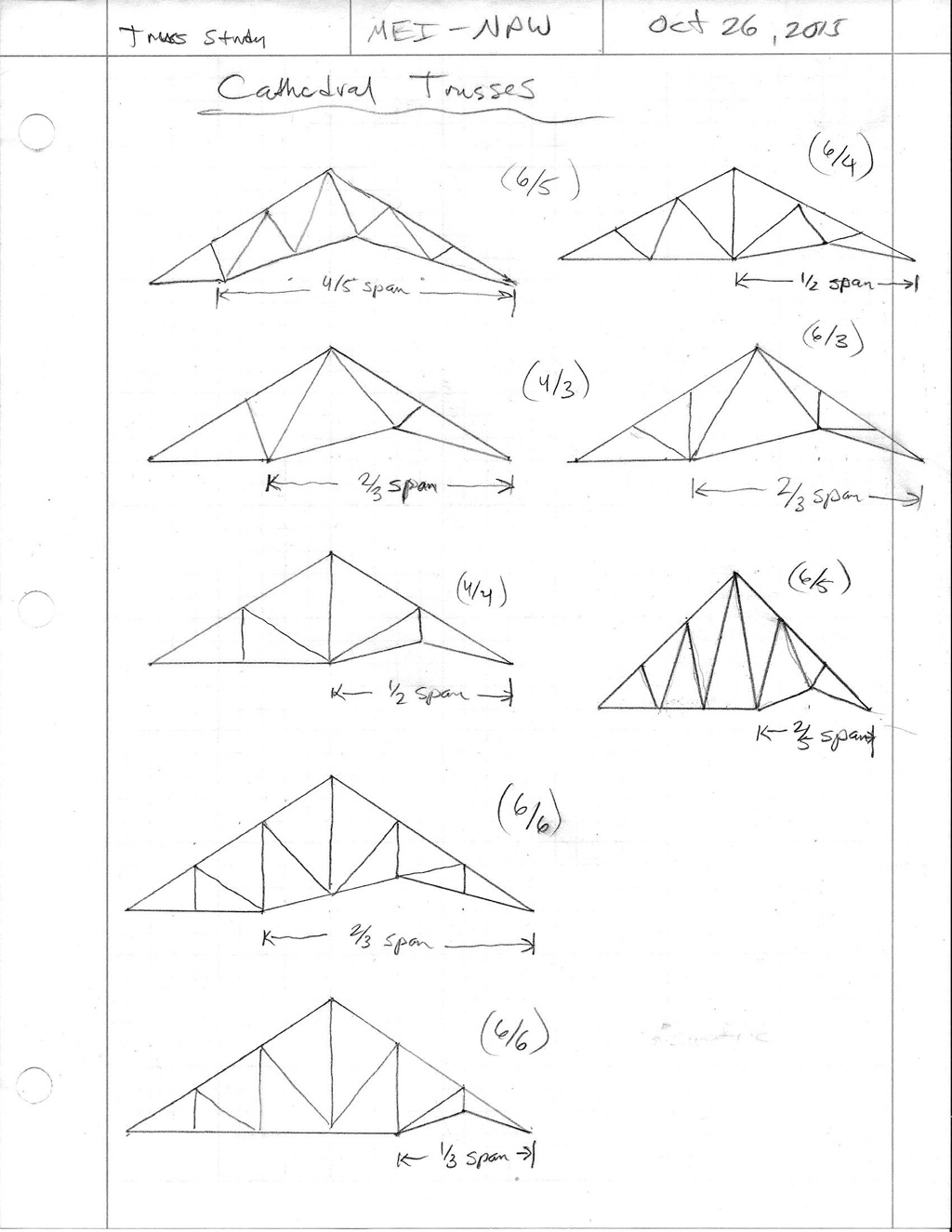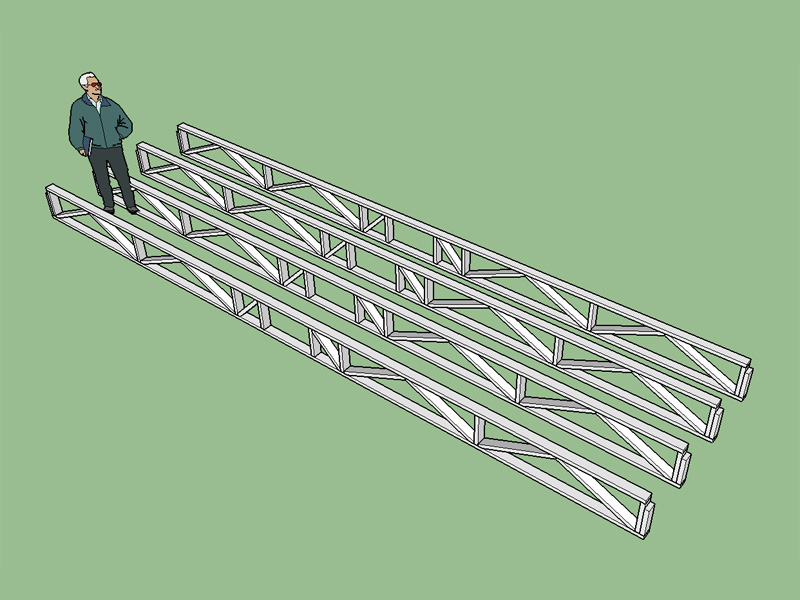I think I will include the option for either of the 3 variants since it isn't too much more to code and I'm getting quite a mixed reaction from different builders and designers. I guess everyone has there preferred method.
Another quite common fascia treatment is to use a 2x6 sub fascia with a 1x8 finish fascia (primed spruce or cedar).
However, I am mostly interested in the sub fascia and then I'll leave it up to the designer/architect to dress it up further as needed.
I'm trying to make the roof framing as easy as possible and basic structural items such as trusses, fascia, outlookers are all automated, then the designer can concentrate on the finish work (ie. ridge caps, trim fascia, barge boards, cupolas).
Another quite common fascia treatment is to use a 2x6 sub fascia with a 1x8 finish fascia (primed spruce or cedar).
However, I am mostly interested in the sub fascia and then I'll leave it up to the designer/architect to dress it up further as needed.
I'm trying to make the roof framing as easy as possible and basic structural items such as trusses, fascia, outlookers are all automated, then the designer can concentrate on the finish work (ie. ridge caps, trim fascia, barge boards, cupolas).


